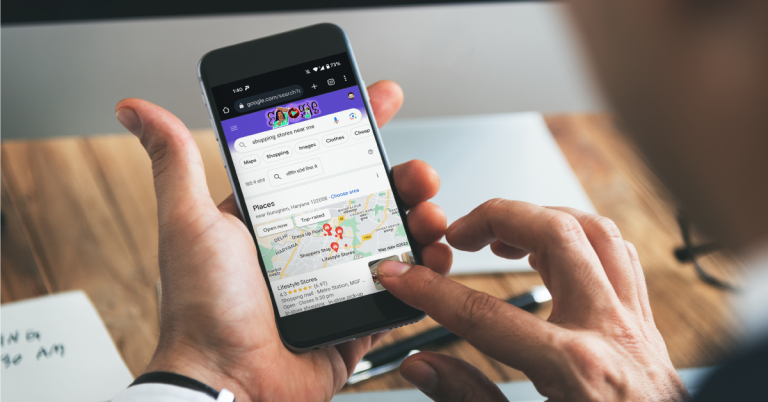Marketing is seeing a phenomenal shift wherein personalisation and localisation is taking a big chunk from mass cover. If you’ve ever found yourself looking for a very specific type of business when you’re out and about, you’ve probably already conducted a hyperlocal search.
Imagine a moment when you are in a new neighbourhood with a friend and you are looking for food options. Your most viable option would be to pick up your smartphone and search for a cafe or a restaurant.You would like this place to be near your current location so that you may quickly reach the location and order food.
A search which has a highly specific geographically defined area – in this case searching for a cafe around your location is termed as “near me “search.The process of targeting this user and showing relevant information is “Hyperlocal marketing”.

While hyperlocal marketing has always been used in some shape or form, the need for it has never been stronger than it is now. While the world struggled with physical movement restrictions to combat Covid19, the term “hyperlocal” has evolved from a marketing buzzword to an entire ecosystem in itself.Marketeers across businesses have understood how crucial it is to boost their companies’ visibility online in order to boost their top line in the physical retail space.
This has resulted in an unprecedented shift in budgets being pumped in to drive each organizations’ hyperlocal presence – be it on paid or organic media. The main goal of hyperlocal marketing is to increase foot traffic to your business.Hyperlocal marketing drives a higher ROI and conversion rate too as it focuses on creating a seamless and targeted consumer journey from the intent based discovery online to a physical point of sale. This is achieved by strategically placing the right ads in front of the right people at the right time.It’s as easy as an individual searching for the nearest supermarket on their mobile and going over to buy some groceries immediately.
Hyperlocal marketing can be broadly bucketed under four Rs – Radius, Relevance, Ratings and Reviews. According to a report by Google (Year in Search 2020), 46% of all searches feature local results (example: “ATM near me” or “store nearby”) – thereby providing an immediate solution for consumers and connecting them with local businesses. Local SEO and mobile optimisation ensure search listings are ranked according to relevance – helping targeted local businesses become discoverable and delivering a favourable customer experience to users. Ratings and reviews add a layer of credibility and unbiased opinion about businesses to help consumers make an informed decision over whether to engage with a business or not.
In summary, there is a huge hyperlocal opportunity that can be tapped into for a market like India where there are 400 million internet users, of which 350 million users have smartphones.
Stay tuned to know more about best practices to use for your hyperlocal marketing strategy in our next blog post!